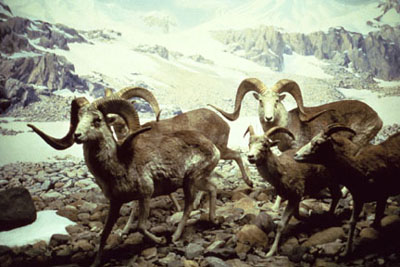

 The Accurate Reloading Forums
The Accurate Reloading Forums  THE ACCURATE RELOADING.COM FORUMS
THE ACCURATE RELOADING.COM FORUMS  Hunting
Hunting  Asian Hunting Forum
Asian Hunting Forum  From Endangered To Thriving: The Markhor And Pakistan’s Trophy Hunting Success
From Endangered To Thriving: The Markhor And Pakistan’s Trophy Hunting SuccessGo  | New  | Find  | Notify  | Tools  | Reply  |  |
| one of us |
https://thefridaytimes.com/30-...ophy-hunting-success From Endangered To Thriving: The Markhor And Pakistan’s Trophy Hunting Success Pakistan’s ecosystems like many around the world are under a threat of increased pressure on habitat and wildlife alike. To ensure wildlife not only survives, but thrives, it needs to be given value. Hunting provides that Dr. Robert Kröger Features April 30, 2025 An article was published in the Friday Times on February 4th by Ubaid Sahil, an undergraduate student, and columnist from The Swat Valley. It was an excellent article outlining the conservation of Pakistan’s ecosystems and the measures being put forward to protect them. The article was a comprehensive analysis of biodiversity hotspots, threats, and how to do more. Unfortunately, the final paragraph dismissed hunting without much analysis. The article ended with these words: “Banning trophy hunting is essential to protect Pakistan’s wildlife, especially the endangered Markhor …” How do I know this was a smear article? Because even as an outsider to Pakistan, I know the tremendous, dare I say, gold star conservation outcome of Markhor conservation success. A success that is due to only one activity. Hunting. So, taking the author’s call to action, consider this article as spreading awareness of the role that hunting is playing in Pakistan, specifically for the Markhor. Pakistan is home to essentially five subspecies of Markhor: Sulimani, Astor, Kabul, Kashmiri, and Bukharan Markhor. When you dig into why the Markhor has been listed as endangered (look up the IUCN report), the main reason for the initial listing was the threat of illegal poaching. Poaching is an illegal activity that generates little to no value for the species itself. Through the poachers eyes, they are seeing some value, as without it, they wouldn’t be undertaking the activity, but the true value of the animal is actually never realised through poaching. The Markhor through a poaching lens is viewed as 1) competition for livestock and grazing, 2) goat-like meat for the pot, and/or 3) illegal removal of large males for their horns for very little “compensation”. I have purposefully quoted compensation as it only benefits one or a couple of individuals, never doing it in the best interest of the community, and only thinking about themselves. Hunting is not the bogeyman that the media makes it out to be – in fact when done correctly, it is a vital cog in wildlife conservation efforts all around the world So, how bad was it? According to population counts in Pakistan issued by the KPK government in the late 1990s, the IUCN quoted around 275 individuals across all Markhor species. Today KP population counts are now north of 4,000 individuals, with all Markhor populations thriving, and thus warrants the gold star acknowledgment of a wildlife conservation success story. So that begs the question how did that happen? Why such an incredible turnaround? The answer is simple. The value of Markhor through international hunting. That first Markhor permit selling for almost $200,000 USD did something completely unique, and a very first for wildlife in Pakistan. For the very first time, the true value of the Markhor was realised. Up until now, there was no activity other than hunting that could generate that value, and nothing has touched that value proposition since the late 1990s to date. The conservation committees that had been formed to manage the hunting quota also had negotiated that 80% of that tag fee go back to the community, and for the first time in Pakistan, hunting had single-handedly saved the endangered Markhor – nothing else can claim extraordinary outcome. Nothing. Let’s understand the impact of the Markhor hunting policy now. The community could still get the meat from the animal (no more poaching required). The community could see the value in sharing grazing resources. Locals are still being employed to watch and look after the Markhor. It also means that locals are hired to be guides, porters, and cooks. This has generated significant funding for these communities: electricity, schooling, investments of funding into larger cities, office areas, some of which have been smartly invested to be self-generating income for the community in perpetuity. Indirectly, because the Markhor population is now 1000% larger, it means the prey base on the mountain is significantly larger, which has increased Snow Leopard populations on the mountain. Imagine that connection – snow leopard populations rebounding because of hunting. Pakistan’s Grand Cricket Revival: Hosting The ICC Champions Trophy And Its Lasting Impact For any wildlife to flourish into the future, the most critical element for that to happen is value. That wildlife needs to have value – whether its Snow Leopards with philanthropists or Markhor with hunters. Hunting is not the bogeyman that the media makes it out to be – in fact when done correctly, it is a vital cog in wildlife conservation efforts all around the world. It surely is the central component of Markhor conservation in Pakistan. Kathi kathi@wildtravel.net 708-425-3552 "The world is a book, and those who do not travel read only one page." | ||
|
| Powered by Social Strata |
| Please Wait. Your request is being processed... |
|
 The Accurate Reloading Forums
The Accurate Reloading Forums  THE ACCURATE RELOADING.COM FORUMS
THE ACCURATE RELOADING.COM FORUMS  Hunting
Hunting  Asian Hunting Forum
Asian Hunting Forum  From Endangered To Thriving: The Markhor And Pakistan’s Trophy Hunting Success
From Endangered To Thriving: The Markhor And Pakistan’s Trophy Hunting Success

Visit our on-line store for AR Memorabilia

